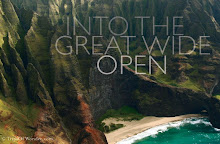"Their old men dream dreams and their young men have visions. We don't need dreams here, we need vision." - from Cat Among the Pigeons by Agatha Christie

- When former General Secretary Hu Yaobang, "a leading reformist" died on April 15, 1989, mourners along with demonstrators seeking change and greater freedom began to gather at and slowly occupy Tiananmen Square in Beijing, China over the course of several weeks' time. On the early morning of May 19, 1989, then General Secretary Zhao Ziyang of China's Communist Party visited the students, intellectuals and demonstrators at Tiananmen Square and spoke to the people (as translated by Asia! Magazine):
"Students, we came too late. Sorry, students. Whatever you say and criticise about us is deserved. My purpose here now is not to ask for your forgiveness. I want to say that now, your bodies are very weak. You have been on a hunger strike for six days, and it's now the seventh day. You cannot go on like this. Starving for such a long time will cause irreparable problems for your bodies, and is dangerous for your health. Now what is most important is to end this hunger strike. I know, you are doing this in the hope that the Party and the government will give a most satisfactory answer for what you are asking for. I feel, our channel for dialogue is open, and some problems need to be resolved through a process. You cannot continue to - after seven days of hunger strike - insist on stopping only when you have a satisfactory answer.
You are still young and have much time ahead of you. You should live healthily to see the day that the Four Modernisations (as proposed by China's first premier Zhou Enlai in 1975 in the areas of agriculture, technology, industry and defence) of China are realised. You are not like us, we are already old, and do not matter. It was not easy for the country and your parents to nurture you to reach university. Now in your late teens and early twenties, you are sacrificing your lives! Students, can you think rationally for a moment? Now the situation is very dire as you all know, the Party and nation are very anxious, the whole society is worried. Besides Beijing is the capital, and each day the situation is worsening; this cannot go on. You mean well, and have the interests of our country at heart, but if this goes on, it will go out of control and will have various adverse effects.
All in all, this is what I have in mind. If you stop the hunger strike, the government will not close the door on dialogue, definitely not! What you have proposed, we can continue to discuss. It is slow, but some issues are being broached. I just wanted to visit you today and at the same time, tell you how we feel, and hope that you will calmly think about this. Under irrational circumstances, it is hard to think clearly on this. All the vigour that you have as young people, we understand as we too were young once, we too protested and we too laid on the tracks without considering the consequences.
Finally I ask again sincerely that you calmly think about what happens from now on. A lot of things can be resolved. I hope that you will end the hunger strike soon and I thank you."
- It is now known that Zhao Ziyang (himself a noted economic reformer in 1980's China) was against the imposition of martial law during the Tiananmen protests and was stripped of his power by Party hard-liners for his perceived support of the demonstrators. Zhao Ziyang's speech on May 19, 1989 to the gathered crowds at Tiananmen Square would serve as his final public appearance as the government of that time placed him under house arrest until his death in 2005.



















